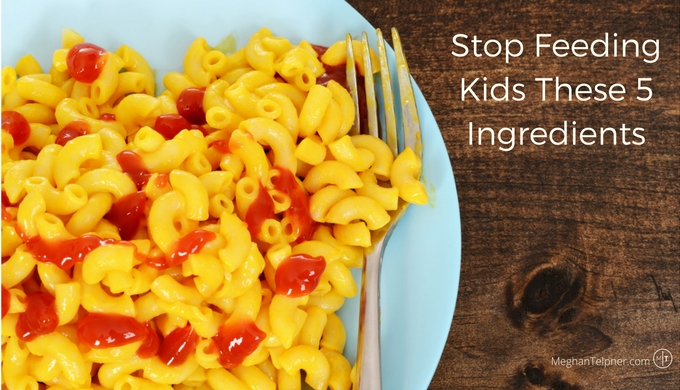5 Ways to Survive When You Change Your Child’s Diet

I used to be critical of people like me – the moms who brought their own cupcakes to parties so their children could eat gluten-free, or dairy-free, or dye-free, or GMO-free, or whatever unacceptable-hidden-evil-free they needed. I remember thinking, “I’m so glad that’s not me!” Not because I didn’t believe it was important for them or their children, but because I just didn’t understand.
For some, food allergies are obvious and immediately noticeable with rashes or other physical symptoms. But for others, they are intolerances or sensitivities (not allergies) and the effects are not as easily recognized or diagnosed, yet are still damaging. It was little comments and conversations that clued me in to this distinction, and to new research about the brain-gut connection.
Discovering how much our gut and what we put into it affects our brain and how it functions is what turned me into ‘that mom’.
And now I understand that my child’s anxiety-ridden, depression-induced, hyperactive behavior that once sent my family into a world of chaos meant we too would become gluten-free, dairy-free, soy-free, corn-free, and the list goes on. I barely knew where to begin, but I knew I needed to.
Luckily, I already had a love for cooking and being in the kitchen. But now I had to do it without all the commercially prepared, prepackaged, and highly processed products we typically stock in a modern kitchen. It was time to make big changes, and I had to do it with the most hyper-sensitive food critic: my eight-year-old anxiety-ridden daughter.
Eating habits are rooted so deep and tied so intricately with our social lives and family routines that it can be nearly impossible to alter without serious upheaval. The impact on daily life can be overwhelming.
Now, a year-and-a-half into this adventure, I have learned a few valuable lessons that can help you survive if you need to change your child’s diet.
1. Embrace the process
It is not going to happen overnight. Allow yourself some breathing room and don’t expect too much too fast. You can take it one day at a time, one meal at a time, or one ingredient at a time. If breakfast is your favorite, master that first. Then move on to snacks, lunches, or dinner.
2. Meal planning—do it!
Taking time to plan for the week reduces stress by eliminating the unknown. Once you have a plan, grocery shopping and meal preparation can happen without all the guess-work and you are free to try new recipes and find things that work for you.
3. Increase your knowledge
Knowledge will validate you, support you and give you the power to make the best choices. Take time to research: find books you love, bloggers you enjoy, and acquaint yourself with online recipe enthusiasts who share their knowledge and skills every day.
4. Collaborate
Include your kids. Get them involved and teach them what you are learning. Let them help you prepare the meals. Make it fun and allow them to take ownership of it. A sense of control over their meals will help facilitate a healthy relationship with food and their own bodies.
5. Be Authentic
There is no one right way. Every body is different and every child is unique in their tastes, appetites and needs. It is your job to figure out how to meet those needs. Part of being authentic means you are okay to bring your own cupcakes to the party. When questioning eyes meet yours, speak up. It’s okay to own this part of your life confidently. It enables others to do the same.
Do you have any advice for how to survive family dietary changes? Please share in the comments!
Photo: FreeImages.com/Teresa Howes
Free Resource Library
Enjoy more than 40 downloadable guides, recipes, and resources.























